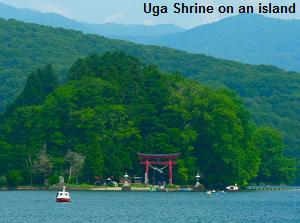
Photo by Nagano Prefecture Tourism Association
Over the weekend I was able to visit Lake Nojiri, 20 km north of Nagano on the border with Niigata. It’s in a beautiful setting, about 3 by 2 km in size and with a backdrop of mountains over which the summer mists hover seductively. It was developed by missionaries before WW2, and there remains a ‘kokusai mura‘ where foreigners have second homes set in woods overlooking the lake. My purpose though was altogether different, and the trip encapsulated the attractions of Shinto with shrines of different sorts – one on a small island, the other set deep in the woods.
The Island Shrine
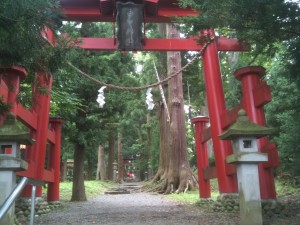
Enter through the torii, and you enter another world
In the midst of Lake Nojiri lies the small Biwa Island. From the shore it looks like a wooded pregnant mound, the torii of which beckons invitingly at the water’s edge. Once you pass through, it is as if entering into another dimension, for an avenue of wooded charm leads up an incline to the appealing Uga Shrine. A miko was sweeping the grounds, and I learnt there was no resident priest. It was her job to take the boat over to the island each day and run the office. She had started in spring and would finish in November, as winter snows cover the shrine for long months.
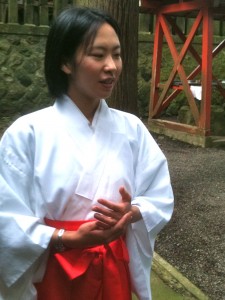
Uga Jinja miko
At 26 she was relatively old by miko standards, and since she was from Tokyo I wondered what had made her take a relatively isolated and low-paid job. ‘I can’t explain,’ she said. ‘Something drew me here.’ She had a natural grace, which suggested a spiritual nature. One night she had slept alone on the island, listening to the strange sounds and looking out on the otherworldly moonlight. It was a different place from daytime, she said. She could feel the presence of the kami.
The haiku master
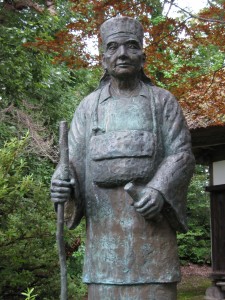
Kobayashi Issa (1763-1827)
Not far from the lake is the home town of Kobayashi Issa, reckoned by many to be one of Japan’s top three haiku masters along with Basho and Buson. He lived a life of poverty and humility, dedicated to his craft. A Shin Buddhist by belief, he wrote a staggering 20,000 haiku, over 1000 of them about animals. That may be one of the reasons I feel a special affinity with him.
My home is so poor
even the resident flies
keep their family small
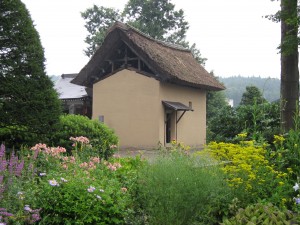
Storehouse where Issa died after his house burnt down
The forest shrine
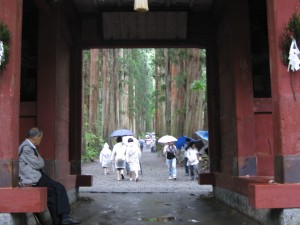
Gateway onto an avenue of giant cedars
On the way back to Nagano I called in at Togakushi Jinja, the Upper Shrine of which is famous for its avenue of cedar trees. The name – Hidden Door – makes reference to the Cave Myth of Amaterasu, and the kami enshrined here is Ame-no-Tajikarawo who pulled her out and sealed the entrance with a rope. Such was his strength (he’s now the kami of sumo) that he threw aside the stone door of the cave at Takachiho in Kyushu it landed here at Togakushi in Nagano!
Here on the long walk through the woods, dripping with summer rains, was the essence of Shinto. The vibrant crystal clear streams; the lush vegetation; the rocks covered in thick moss – nature as blessing was never so graphic. Why isn’t this place more famous, I kept wondering, as full of awe I looked up the staggeringly tall trunks that soar heavenwards with a force that leaves one gasping. For anyone ever travelling through this part of Japan, please, please, please don’t skip Togakushi. It’ll inspire you!
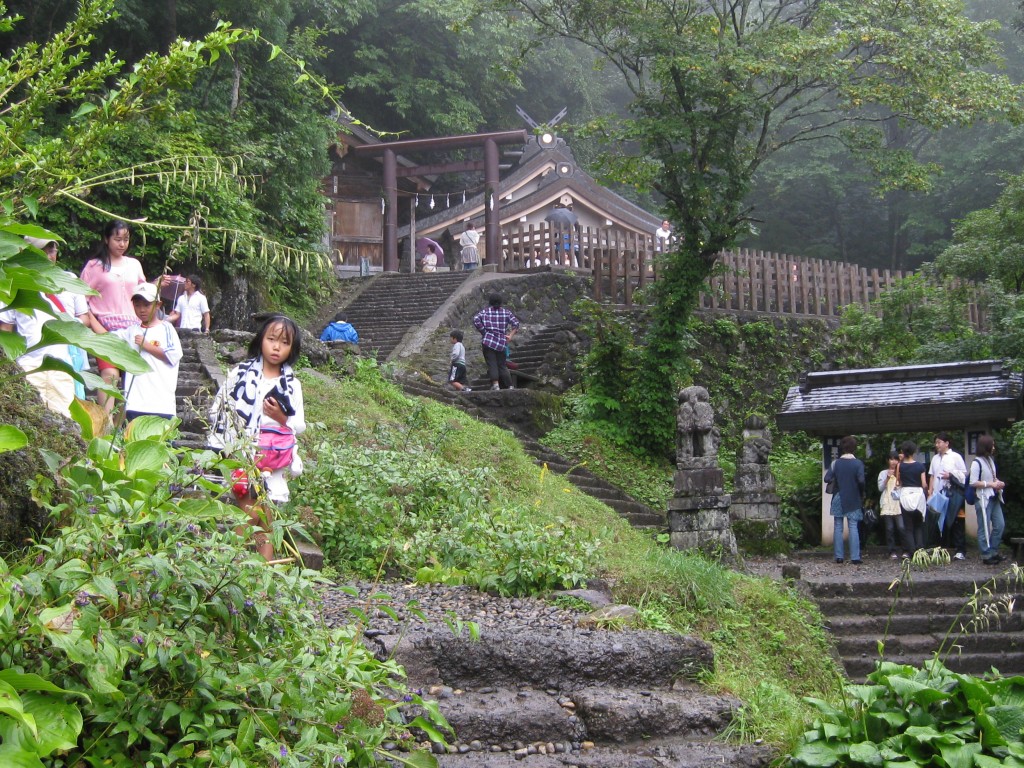
The Upper Shrine of Togakushi Jinja
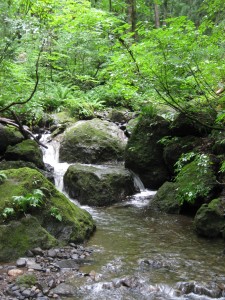
A blessing from the gods
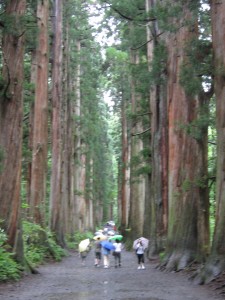
An avenue into Wonderland
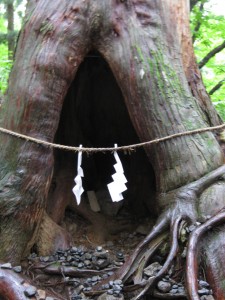
Sacred opening
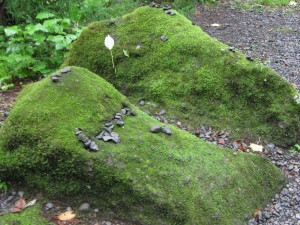
Rocks gathering moss
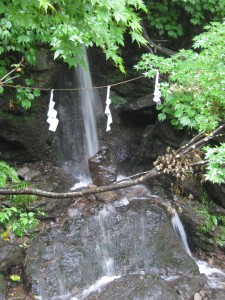
Kami essence

A lovely part of Japan, and almost cool, I dare say, in this torrid season. Issa wrote more like 10,000 on animals, I’d imagine – at least if you include insects. Perhaps one of them bit you at his house as you were looking around?